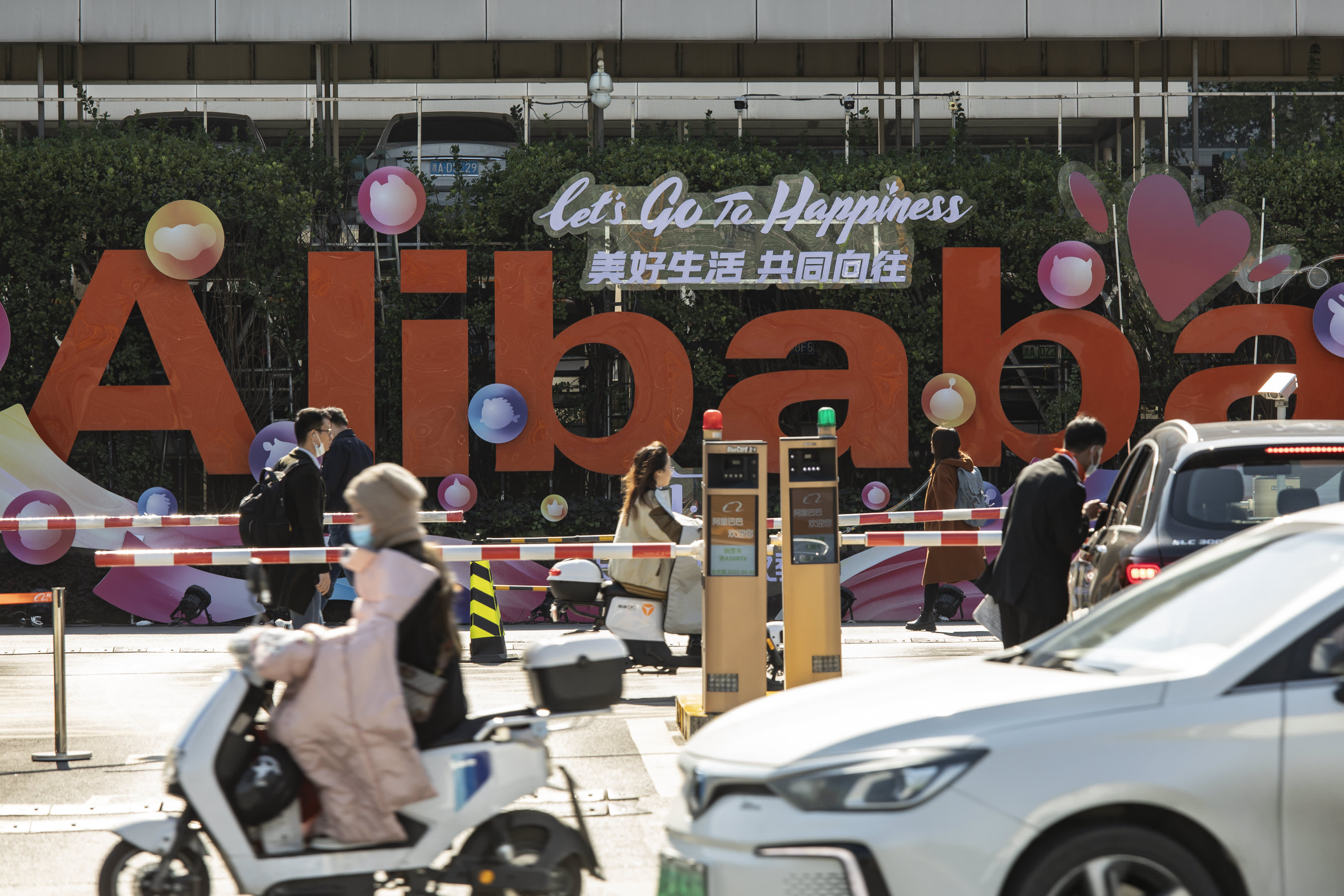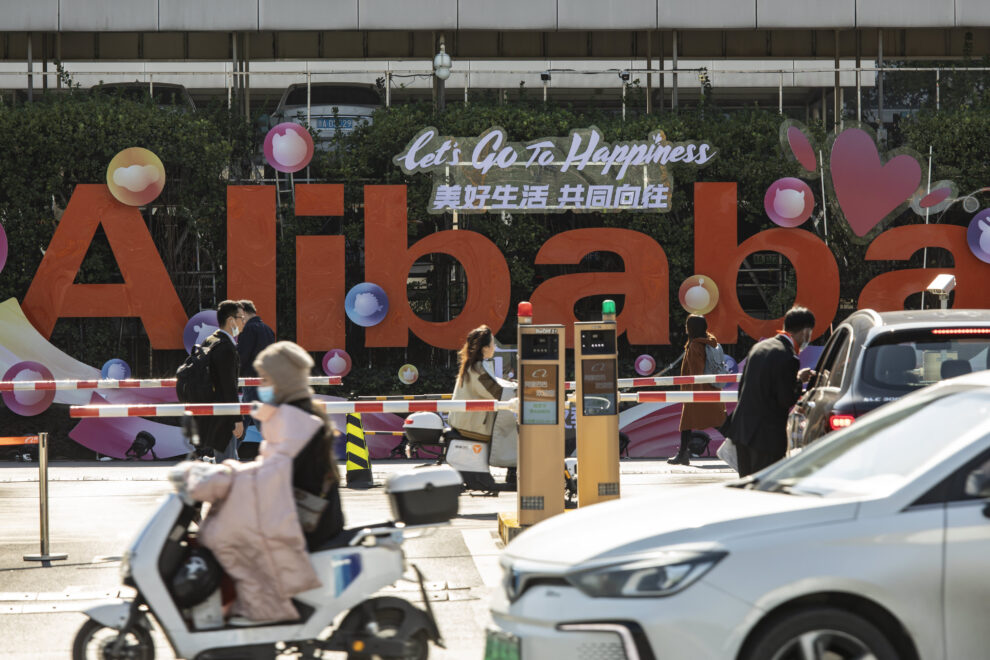
Signage for Alibaba Group Holding Ltd. displayed at the company’s headquarters in Hangzhou, China, on Wednesday, Nov. 10, 2021. Alibaba’s annual 11.11 Singles’ Day online shopping bonanza, one that draws in hundreds of millions of people across the globe, is a more low-key affair this year as the e-commerce giant seeks to turn the focus away from increasing sales and more toward sustainability and philanthropy — key pillars of President Xi Jinping’s drive to reshape China’s economy.
Qilai Shen | Bloomberg | Getty Images
GUANGZHOU, China — Alibaba on Thursday missed revenue and earnings expectations for the September quarter, as slowing economic growth in China and the country’s crackdown on its technology companies weighed on results.
Here’s how Alibaba did in its fiscal second-quarter, versus Refinitiv consensus estimates:
- Revenue: 200.69 billion yuan ($31.4 billion) vs. 204.93 billion yuan estimated, a 29% year-on-year rise.
- EPS: 11.20 yuan vs. 12.36 yuan estimated, a 38% year-on-year decline.
The company also slashed its revenue guidance for its current fiscal year. It previously expected to bring in 930 billion yuan, which would have been about 29.5% year-on-year growth. But it now expects growth to be between 20% and 23% year-on-year.
Alibaba’s U.S.-listed shares fell 4.3% in pre-market trade.
Alibaba has been on the receiving end of China’s crackdown on its domestic technology industry which has seen a slew of new regulation brought in from antitrust to data protection.
While China’s tech giants have grown largely unencumbered over the past few years, Beijing has looked to clean up some of the behaviors of its corporates. Alibaba was fined $2.8 billion in April as part of an anti-monopoly probe.
Meanwhile, China’s economy slowed down in the third quarter of the year.
Expectations were low coming into the fiscal second-quarter earnings report as a result, with analysts expecting it to be one of the most challenging quarters ever for the Chinese e-commerce giant.
Alibaba’s core commerce business saw revenue grow 31% year-on-year to 171.17 billion yuan, missing expectations.
Customer management revenue, or CMR, is the single largest portion of Alibaba’s sales. CMR is revenue Alibaba gets from services such as marketing that the company offers to merchants on its Taobao and Tmall e-commerce platforms.
CMR grew just 3% year-on-year. Alibaba said this was due to slow growth of sales on its platform “that resulted from slowing market conditions and more players in the China e-commerce market.”
Alibaba has been facing intense competition from its rival JD.com but also newer players like Pinduoduo and even social media companies like TikTok-owner ByteDance.
The company is coming off the back of Singles Day, a huge shopping event in China where e-commerce platforms push heavy discounts and rack up billions of dollars of sales.
Alibaba raked in gross merchandise volume during the 11-day period totaling 540.3 billion yuan ($84.54 billion). Any revenue Alibaba gets from this event will not be reflected in the September quarter.





